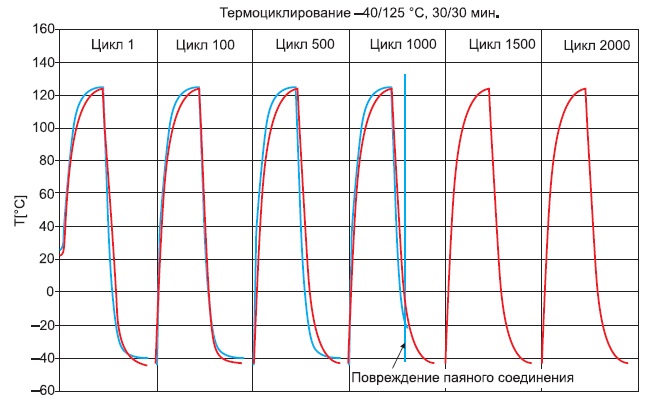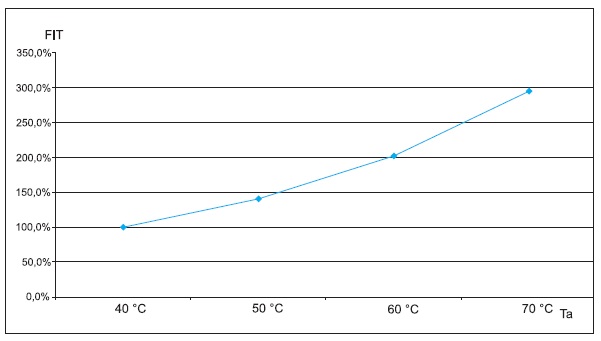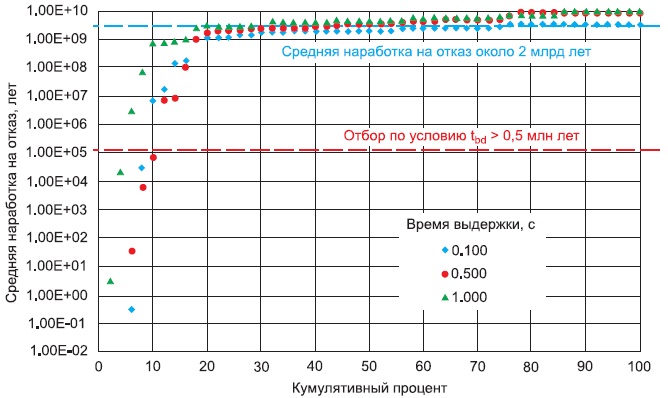Answer the question
In order to leave comments, you need to log in
How does the degree of wear of microcircuits depend on temperature?
At least approximately.
Usually, the specification for the device indicates the maximum operating temperature, which should be adhered to in order for the device to work for a long time. That is, it is just one digit, and there are only two states: "above" and "below" the specified value.
However, I would like to know the dependence of the estimated average life of the device on temperature in the form of a graph (with a normal radiation background and without taking into account obvious factory defects). First of all, the shape of this graph is interesting, and not the exact values, that is, what function it is described by (linearly or otherwise).
The values themselves are also interesting in the second place. That is, about how long a video card or processor will survive at various temperatures. For example, at 200°C, etc.
Answer the question
In order to leave comments, you need to log in
Exponentially . The higher the temperature, the greater the probability of failure, and it increases faster and faster as the temperature rises.
Here, basically, the problem is with overheating - CEA always has a recommended temperature regime, which is better not to violate and which guarantees stable operation if this regime is observed. Of course, if you exceed, then the probability of failure will increase.
If you have some non-standard temperature operating conditions, then take devices certified for these conditions, the same industrial PCs, for example.
200 degrees is, of course, too much.
To do this, it is better to make a request to the manufacturer, because. there will be no single dependency.
Yes, whatever.
Each component, chip, part, assembly has its own parameters and behavior.
for the same microcircuit, everything depends on the composition and layers of coatings, if there are a bunch of transistors and capacitors inside - they will float in their own way, if there are diodes with resistances - in their own way and so on - until you test you will not know.
Therefore, in the datasheets, there is a min / max for which the microcircuit is first developed, and then tested, and about the fact that beyond these limits, neither the manufacturer, nor even anyone else, will guarantee, since the behavior has not been studied
If we are talking about a video card / processor, then at 200 degrees they will not work, the overheating protection will work. As far as I remember, the average temperature of the processor is 90-100 degrees. And then they can start to melt, and at the same time they will fail, there is no schedule. Yes, and the concept of failure is also different, the technique can work, but incorrectly, and this is not always considered a failure.
In addition, for any technique there are fairly wide tolerances and it is completely unpredictable how long a particular instance will work outside normal temperatures - it can work for years, or it can burn out immediately when power is applied.
ps By the way, the experience of Chinese comrades and one notorious inventor from California shows that even general-purpose electronics behave quite well in extreme conditions.
Critical is NOT the temperature of the crystal, but the TEMPERATURE DIFFERENCE !!!

This is an extreme study (-40 - +120 C), but it is clearly seen that the main task is to maintain a stable temperature of the crystal and the device as a whole. The crystal itself will be intact, but the soldering will begin to fall off at 1000 cycles.
The temperature itself affects the reliability of the semiconductor reduces the service life by 3 times. BUT.

Looking at the service life of a microcircuit crystal, it can be seen that it is practically eternal (in human terms), that is, after heating the crystal to +70 C, the semiconductor will not last 500 thousand years (as can be seen on the graph) but three times less, just "some " 165 THOUSAND YEARS

Didn't find what you were looking for?
Ask your questionAsk a Question
731 491 924 answers to any question